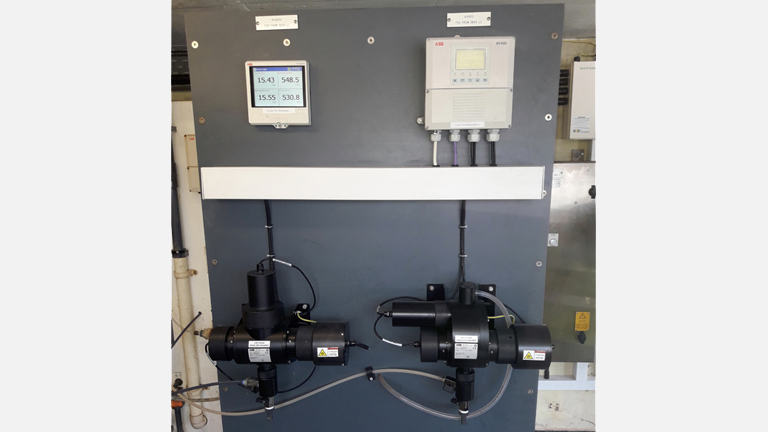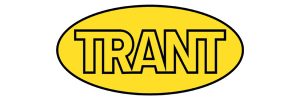Otterbourne WTW (2019)

Otterbourne WSW is a critical site, located between Southampton and Winchester, supplying water to the surrounding area to a total of around 250,000 homes. Otterbourne was originally constructed in 1939, with extensions to the works being constructed in 1949 and 1958. The works treats borehole and river water which supply two independent treatment streams. The groundwater stream has an abstraction license of up to 58 ML/d and the surface water has an abstraction license of up to 45.46 ML/d. Due to life expired assets within the surface water stream and a lack of control integration the works required capital maintenance works to guard water quality and supply resilience.
Driver for the scheme
The current surface water treatment facility has exceeded the lifespan it was built for and more maintenance is needed. Longer term investment was also proposed at the site and therefore the design life of the refurbishment was limited to 5 years. The current scheme will provide medium term improvements to asset resilience.
Current surface water treatment process
Surface water is abstracted from the River Itchen and pumped via the low lift pumping station, to the main works for treatment. Treatment begins as the water passes through to the clarifiers. Raw water is dosed with ferric chloride and polyelectrolyte to aid flocculation. The water is also dosed with a small amount of sodium hypochlorite to control algae build up within the plant.
There are three possible treatment streams through 2 (No.) Accentifloc clarifiers and the one bank of sedimentation tanks. If demand is low then the number of treatment streams can be reduced. Water passes through the clarifiers and sedimentation tanks and is dosed with a mid-point dose of sodium hypochlorite as it passes through to the three contact tanks (dependent on the number of treatment streams in operation).
After the contact tanks the water passes through 10 (No.) rapid gravity filters (RGFs). Wash water from the rapid gravity filters is recycled back to the head of works indirectly via the wash water recovery plant if turbidity <10 NTU and with a maximum volume of 10% of the works inflow permitted. After this stage the water receives a final dose of sodium hypochlorite before it passes into the south west chlorine contact tank. Water is dosed with orthophosphoric acid inside both cells of the south west contact tank, which assists plumbosolvency control. The south-west final water is then pumped to the Yewhill and Otterbourne Hill Reservoirs using 4 (No.) high lift pumps (No. 7-10).

Refurbished outlet chamber – Courtesy of Trant Engineering
Rapid gravity filters
The works were done to mitigate future water quality risks of a microbiological failure, due to the supplying of unchlorinated or partially filtered water to customers. This could occur when the filters were taken out of service due to backwash, filter failure, site shutdown or power failure on site due to future asset deterioration, and required essential upgrades to each filter.
The risks were present due to the RGF outlet valves not sealing adequately. The flow rate changes at the filters outlet also did not comply with best practice design to mitigate against a potential cryptosporidium breakthrough.
The previous valve control mechanism was controlled via a float valve system that has been in place since the facility was first constructed in the 1930s. It was no longer possible to provide the spare parts required to maintain this flow control mechanism. There was also no facility to undertake the best practice of disposal of the post backwashing turbidity spike at the backwash end before the start of forward flow to supply. Dead spots and boils within the media bed were also observed during the backwash process.
To improve the assets and mitigate the risks identified, the RGFs were removed from service in pairs to allow the refurbishment of the individual RGFs.

Existing coagulation unit – Courtesy of Trant Engineering Ltd
The media which has reached the end of its design life was replaced with enhanced media depths made up of gravels, sand and anthracite. Whilst the media was removed, the opportunity was taken to inspect the under drains and complete a structural survey of the RGF, with necessary repairs made to both underdrains and concrete walls.
The underdrains were made up of asbestos cement laterals and damaged or blocked sections were removed by a specialist asbestos removal company and repaired with Reg 31 PE pipework and couplings. A full structural survey was undertaken on one selected RGF from each of the decades constructed.
The structural survey confirmed that the structure was of sound condition and had an expected design life of more the 5 years. The tanks walls were repaired where spalling had occurred, and reinforcing had become exposed. Ultrasonic level transducers were installed on each RGF to monitor RGF levels during the filtration and backwash sequences enabling the outlet valve to manipulate the flows as required.
RGF outlet chamber
The outlet chambers were controlled via a mechanical float valve mechanism. Due to the corrosive atmosphere within the RGF building the linkages and joints had become corroded and there was a risk of them not closing fully causing the RGF block to flood at times. The old valve system was removed and exchanged for 3 (No.) actuated valves managed on 3 (No.) modbus networks.
This has allowed for a fully automated system permitting the valves to modulate and adjust to a variance in flows enabling control and ensuring that flows do not exceed 5% of change in filtered water per minute.
A new PLC was installed, and the system added to the network and allowing the works to be monitored and operated from a main control room. The outlet chambers have a control system of inlet plug valves, run to waste sludge valves and outlet penstocks. Ultrasonic flow measurement has also been installed to measure the flow rates through the outlet chamber over a newly installed stainless steel weir. Due to the corrosive atmosphere the covers have been replaced and designed to accommodate the new valves and ultrasonic.
With the installation of the new valve system a run to waste facility has been added to the up-wash function representing best practice. At the end of the wash, water is run to waste ensuring that the initial spike in turbidity when returning to service is run to waste, reducing the risk of a microbiological failure. In the event of a power failure the system has an uninterrupted power supply to ensure that the valves close and prevent unfiltered water entering the system.

(left) The replacement upwash valve and actuated valve and (right) rapid gravity filters hall – Courtesy of Trant Engineering Ltd
Auto coagulation trial
Coagulation is a neutralisation process whereby colloidal particles in the water tend to be negatively charged and the iron/aluminium coagulants positively charged. Enough coagulant is dosed to achieve charge neutralisation and then additional coagulant added for flocculation to occur.
Automatic coagulation control is something referenced in the guidelines and recommendations which came out of the Badenoch and Bouchier reports on cryptosporidium. There are three viable approaches to automatic coagulation control. The first uses turbidity and colour; although UV254 has been used more recently as a surrogate for colour. The other two methods use either streaming current or zeta potential technology.
Southern Water installed the ABB system on all its surface water sources in the early 2000s; largely as a means of optimising the coagulation and clarification processes to improve cryptosporidium removal in line with Badenoch and Bouchier recommendations to water companies.

Trial auto coagulation unit – Courtesy of Trant Engineering Ltd
The system uses turbidity, true colour and pH data in an algorithm which predicts the coagulant dose required.
This is then used with raw water flow to instruct the dosing pumps to dose at the correct rate. That original system used bespoke hardware which is now obsolete, and at the point where it is now longer supportable. Measurement of true colour became impossible as this depended on a paper strip-filter in the obsolete hardware.
Southern Water assessed the options including streaming current and zeta potential as a replacement for the current ABB system, as at that stage ABB did not have a replacement product. Alternative proprietary systems were available, and at least one other Water Company had developed their own in-house algorithms to use turbidity and UV254 for dose control. The assessment used experience from elsewhere in the industry.
For the Otterbourne site, discussions with ABB resulted in a proposal from them for a system without bespoke hardware which would use standard pH, turbidity and UV254 instruments to provide raw water data to their existing dose predictor software and algorithm.
Trials were carried out in which the impact of using of UV254 as a surrogate for colour was assessed, and the implications for the algorithm understood. The trial was carried out across the four seasons to capture any significant changes in raw water quality.
A final data review for the Otterbourne trial was completed in May 2019, and it is now proposed that the current works use the trial system as the new auto-coagulant1 dosing facility.









